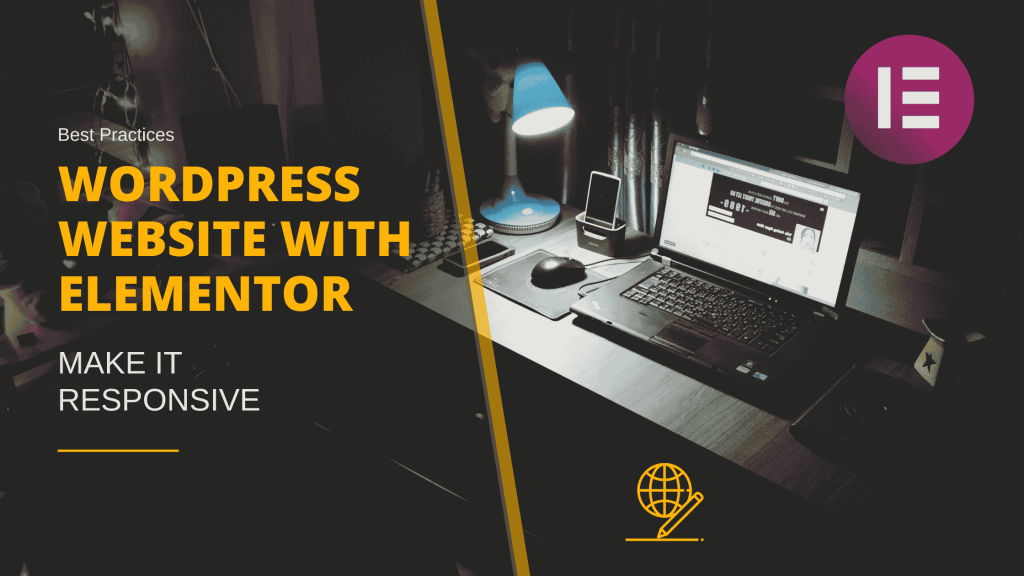In today’s digital age, building a responsive website is not just a trend; it’s an absolute necessity. With the increasing usage of mobile devices and varying screen sizes, having a website that adapts flawlessly to all devices is crucial for both user experience and SEO. Elementor, one of the most popular page builders for WordPress, makes this process easier. But knowing how to leverage its features effectively is key to creating a high-quality, responsive website.
In this guide, we’ll dive deep into the best practices for building a responsive WordPress website using Elementor, covering essential features, tips, and techniques to ensure your site looks perfect on every device.
Why Responsive Design is Important
Before we jump into Elementor-specific practices, it’s crucial to understand why responsive design matters:
- User Experience: A responsive website ensures that visitors can easily navigate and interact with your site, regardless of the device they are using. A seamless experience across devices increases engagement and reduces bounce rates.
- SEO Benefits: Google now uses mobile-first indexing, which means it primarily uses the mobile version of your site for ranking and indexing. A responsive design directly impacts your search engine rankings.
- Increased Conversions: A well-optimized, responsive site provides a frictionless experience that can lead to higher conversions, whether it’s making a purchase, filling out a form, or signing up for a newsletter.
With that said, Elementor makes responsive design easy, but you need to know how to properly use its features to get the best results.
Understanding Elementor’s Responsive Controls
Elementor provides powerful responsive design controls, which you can use to customize the appearance of your site on mobile, tablet, and desktop. These include:
- Responsive Viewports: Elementor allows you to switch between different viewports (desktop, tablet, and mobile) while designing. This gives you a live preview of how your site will appear on different devices.
- Section and Column Widths: You can easily adjust section and column widths for different screen sizes. For example, a column that looks good as a two-column layout on desktop can be stacked vertically on mobile for better readability.
- Custom Breakpoints: Elementor’s default breakpoints are 1024px for tablets and 767px for mobile, but you can customize these values to better suit your design needs.
- Hide/Show Elements: Elementor allows you to hide or show certain elements based on the device being used. For example, you might want to show a large hero image on desktop but hide it on mobile to improve load times and user experience.
Now, let’s dive into specific best practices.
Best Practices for Building a Responsive Website with Elementor
1. Start with a Mobile-First Approach
One of the key aspects of responsive web design is the mobile-first approach. Since most users now browse the internet on mobile devices, it’s smart to design for mobile screens first and then scale up for larger devices. This ensures that your site looks and functions well on the smallest screens before you add complexity for desktops and tablets.
Here’s how you can apply a mobile-first strategy with Elementor:
- Switch to Mobile Viewport: In Elementor’s editor, start by switching to the mobile view. Focus on creating a clean and functional layout for mobile first.
- Use Stacked Layouts: For mobile devices, use stacked layouts (where columns are aligned vertically) instead of side-by-side columns to enhance readability.
- Reduce Image Sizes: Large images can slow down the site on mobile. Use smaller, optimized images or hide unnecessary images to reduce load times.
2. Leverage Elementor’s Responsive Settings
One of Elementor’s key strengths is its robust responsive settings. These settings allow you to customize various elements for different devices. Follow these steps:
- Adjust Column and Section Widths: Ensure your content adapts well to different screen sizes by setting specific column and section widths for each viewport. For example, if your desktop layout uses three columns, you might want to switch to a single-column layout on mobile for better readability.
- Font Sizes: Typography plays a critical role in user experience. Use Elementor’s custom font size controls to adjust font sizes for mobile, tablet, and desktop. Large fonts that look great on desktop may appear too big on mobile, so adjust accordingly.
- Padding and Margins: Customize padding and margins for different screen sizes to prevent elements from being too cramped or too spaced out on mobile. Use percentage-based margins and padding to create fluid designs that adapt to any screen size.
3. Utilize Custom Breakpoints for Greater Control
While Elementor provides default breakpoints for mobile and tablet, sometimes you may need finer control over specific screen sizes. Elementor Pro allows you to set custom breakpoints, giving you flexibility over how your design behaves on non-standard screen sizes like larger tablets or smaller laptops.
- Create Additional Breakpoints: Use the “Additional Custom Breakpoints” feature (available in Elementor Pro) to specify exactly when your design should adjust. This can help you create more nuanced designs for unique devices, like large mobile screens or ultra-wide desktops.
4. Optimize Images and Media for Different Devices
Images and videos often account for a significant portion of page load times, especially on mobile. To ensure your site loads quickly on all devices, follow these optimization tips:
- Use Scaled Images: Upload multiple versions of your images (e.g., one for desktop, one for tablet, and one for mobile) and serve the appropriate image based on the device. You can control this in Elementor by setting different image sources for different devices.
- Lazy Load Images: Enable lazy loading for images and videos, so that they only load when they are about to appear on the user’s screen. This reduces initial load time, especially on mobile devices.
- Optimize Videos: Instead of embedding large video files, consider using external platforms like YouTube or Vimeo. You can use Elementor’s video widget to embed the videos, ensuring they are responsive and optimized for mobile viewing.
5. Hide Non-Essential Elements on Mobile
Not all desktop content is necessary for mobile users. To improve load times and user experience on smaller screens, hide non-essential elements on mobile. For example:
- Hide Large Hero Images: While large images and sliders may look great on desktop, they can slow down load times on mobile. Consider hiding them or replacing them with a simpler graphic or text.
- Simplify Menus and Navigation: Use Elementor’s mobile menu options to create a hamburger menu for mobile users. This keeps the design clean and easy to navigate.
6. Test, Test, and Test Again
Building a responsive website doesn’t end once you finish designing. Thorough testing across devices and browsers is essential to ensure your website functions properly. Here’s what to check:
- Cross-Browser Testing: Test your site on different browsers (Chrome, Safari, Firefox, etc.) to ensure it works smoothly on each platform.
- Device Emulators: Use tools like Chrome’s Developer Tools, BrowserStack, or real devices to test how your site looks and behaves on different screen sizes, from large desktop monitors to small smartphones.
- Real-World Testing: After using emulators and testing tools, try accessing your website on actual devices to ensure the design responds as expected in real-world scenarios.
Conclusion
Building a responsive WordPress website with Elementor is a powerful way to ensure your site offers an optimal user experience across all devices. By following the best practices outlined in this guide—starting with a mobile-first approach, leveraging Elementor’s responsive controls, customizing breakpoints, optimizing images, and thoroughly testing—you’ll create a website that not only looks great but also performs well, leading to increased engagement and conversions.
Whether you’re a beginner or an advanced Elementor user, applying these tips will help you stay ahead of the curve in responsive web design. Remember, responsive design is more than just making things look good on mobile; it’s about creating a seamless experience that delights users and boosts your site’s overall success.

